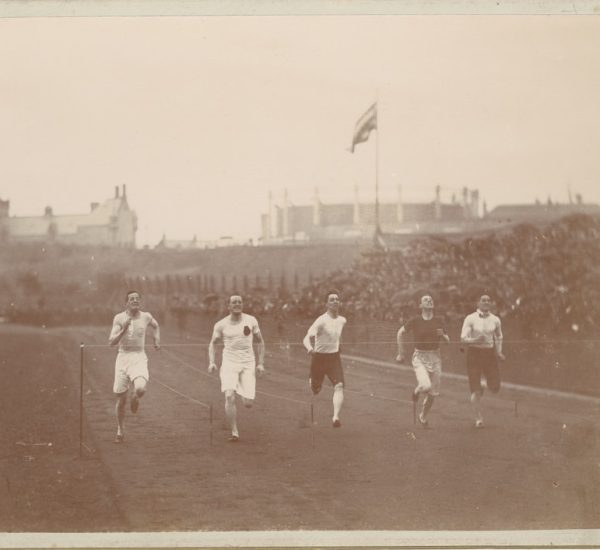In the evolving world of sports betting, props and same-game parlays (SGPs) have captured the imagination of both casual bettors and seasoned professionals. These wagers offer enticing payouts and a customized betting experience, but they also introduce complex statistical challenges. At the heart of smart prop and SGP betting lies a critical factor: understanding and safely modeling correlations between events. Failing to account properly for these interdependencies can skew expectations, inflate risk, and steer even the sharpest bettor into unprofitable territory.
The Rise of Props and Same-Game Parlays
Player props—such as predicting how many touchdowns a quarterback will throw or how many rebounds a forward will grab—have exploded in popularity due to their player-specific focus and accessibility. Likewise, SGPs allow bettors to lace multiple bets from a single game into one wager, providing more excitement and higher potential payouts than single-leg wagers.
However, the bet structure in an SGP means that the individual legs of the parlay are inherently tied together. For instance, if a team’s quarterback exceeds 300 passing yards, it’s more probable that a wide receiver on the same team will also surpass their yardage total. That’s a classic example of correlated outcomes, and it needs to be modeled with care.

Understanding Correlations in Prop Markets
Correlations between bets occur when the outcome of one bet affects the likelihood of another. In stand-alone parlays across different games, such interactions are usually minimal or non-existent. But within a single-game context, bookmakers often adjust odds to reflect these linkages. Failure to recognize underlying correlations can lead to overestimation of the true expected value.
Here are some common examples of correlated props:
- Quarterback yardage and wide receiver receptions: A spike in quarterback passing yards correlates positively with at least one receiver having a high volume day.
- Running back rushing yards and game flow: If a team is favored and expected to lead, their lead back is more likely to accumulate volume and total yards.
- Defense and under outcomes: A dominant defensive game often suppresses offense, making unders on team, player, and game totals more likely.
Ignoring these relationships in modeling leads to inefficient SGP strategies—especially when attempting to exploit perceived “value” without statistical justification. Bookmakers may allow SGPs for popular games but those odds are carefully crafted to align with internal correlation models, often leaving unsuspecting bettors overpaying for perceived upside.
Safe Modeling Practices
In order to model props and SGPs responsibly, bettors need tools and frameworks that reflect the underlying connection between events. Here are several practices that can help improve accuracy and minimize downside exposure:
1. Build a Correlated Simulation Model
Traditionally, single-event outcomes are simulated via independent models. In props and SGP scenarios, it’s crucial to simulate game environments holistically. Using Monte Carlo simulations can allow you to model hundreds or thousands of game flows, accounting for how each outcome (e.g., passing yards, rush attempts, interceptions) fluctuates with changes in others.
To do this well, integrate multivariate probability distributions. For example, a bivariate normal distribution can be used to reflect joint behavior between two prop lines, assuming you know or have reasoned the correlation coefficient between them.
2. Use Market Implied Probabilities—But Carefully
Odds from sharp sportsbooks often reflect efficient pricing. Reverse-engineering implied probabilities from these lines can help you estimate the joint probability of legs in an SGP. However, beware of blindly assuming independence between props:
- Don’t multiply raw probabilities unless you’re sure no correlation exists.
- Use copulas or other dependence structures for more accurate adjustments.
You can also calibrate your model using available pricing of SGPs from regulated books to identify overrated or underrated combinations.
3. Historical Data Retrieval and Analysis
Leverage historical performance and situational context to determine empirical correlations. For example, analyze how often a quarterback’s 300-yard passing game led to a receiver exceeding 100 yards. Calculate conditional probabilities based on past outcomes to gain a statistical basis for your projections.

However, historical data must be filtered carefully—adjusting for opponent strength, weather, game total, and even play caller behavior. Without these layers, your correlation estimates could be skewed by outliers or non-recurring patterns.
4. Avoid Cherry-Picking Correlations
It’s tempting to find “trendy” props and assume a certain outcome strengthens another bet, but overfitting your logic to recent games or small sample sizes is risky. Professional modelers keep confidence intervals wide enough to account for variance, especially in sports like football that are subject to many unpredictable in-game events (penalties, turnovers, injuries).
Instead of manually identifying what “should” correlate, look at your model’s outputs over many simulations. Are there clusters of outcomes that push total game score up, causing inflation in specific stat lines? Are certain players consistently trailing their projections in specific game environments? Use those trends to refine inputs—not outcomes.
Common Pitfalls and How to Avoid Them
The growing number of betting tools and public projections has leveled the playing field somewhat. However, sharp analysis still relies on sober methodologies and not narrative-driven decision-making. Here are key pitfalls:
- Overconfidence in high-payout combinations: Large returns can lure bettors into overstating probability, leading to bankroll burnout.
- Failing to update models in real time: Rosters, injuries, and weather changes must be incorporated continuously for accuracy.
- Assuming equal correlation for all players: Some players operate outside of team-centered trends (e.g., dual-threat running backs), requiring unique calibration.
A disciplined, data-first approach to modeling is always superior to gut-driven guesswork—especially within the narrow margins of prop accuracy and SGP pricing.
Advanced Tools and Resources
Today’s bettors can leverage an ecosystem of advanced analytics platforms, including open-source Python and R packages customized for statistical modeling. Some sophisticated modelers use tools like:
- PyMC3 or Stan—for Bayesian inference in risk modeling
- scikit-learn—for machine learning-based prediction
- FantasyLabs, Establish the Run, and PFF—for detailed player stats and projections
Nothing replaces critical thinking and manual model review, but these tools make large-scale correlation testing achievable within hours, not days.
Conclusion: Modeling with Caution and Clarity
Props and same-game parlays represent some of the most exciting avenues in modern sports betting. But their complexity demands respect and mathematical rigor. Modeling correlated outcomes safely requires a combination of simulation, real-world data, historical context, and an understanding of betting markets.
The edge that prop and SGP bets can provide is only accessible to those who approach them not just with creativity, but with discipline. Whether using Monte Carlo methods or analyzing player dependencies across scenarios, the careful modeler will always outlast the emotional bettor in the long run.
Winning in this arena isn’t about making bold calls—it’s about making informed ones.



